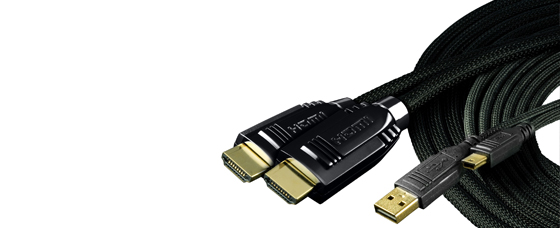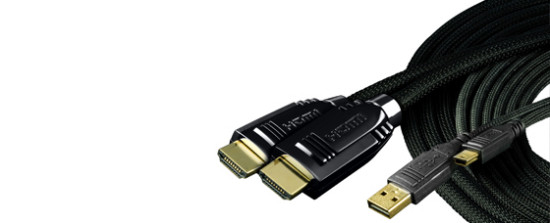Most of us have just gotten used to HDMI, its standards and how it works. However, technology is always pushing forward and today a brand new standard has been announced; HDMI 2.0.
Revealed today for the first time officially by the guys at HDMI Licensing, HDMI 2.0 is primarily needed to make the push from Full HD to 4K and Ultra HD TVs possible. Fortunately it’s more of a small upgrade than a whole new platform, but we’ve decided to put answers to the most common questions to help you understand what HDMI 2.0 is and whether you’ll need it.
What’s the difference between HDMI 1.4 and HDMI 2.0?
HDMI 2.0 has been designed to be able to carry more bandwidth. With 4K and Ultra HD televisions on the way, there’s even more picture and audio data that has to be sent to and from the TV. HDMI 1.4, the current standard, can do this in theory but it isn’t future proof. With HDMI 2.0 we can watch 4K (a super high resolution of 3,840 x 2,160) with a frame rate of 50 or 60 frames per second – this is precisely what the extra bandwidth is needed for, delivering super high quality picture and audio.
How much bandwidth can HDMI 2.0 deliver?
Up to 18 gigabytes per second. HDMI 1.4 can deliver up to 10.2Gbps, which can in fact handle 4K resolutions, but as this technology will advance, HDMI 1.4 won’t be as capable.
Will I need fancy new cables and connectors?
Absolutely not, thankfully! HDMI 2.0 is based on the original standard and the technology will be built into ports on 4K and UHD TVs and products in the future. Existing HDMI cables (category 2) will work just fine as they can carry the increased bandwidth, but in the future we will start to see HDMI 2.0 cables which are designed specifically for use with 4K products.
What else is better with HDMI 2.0?
HDMI 2.0 can carry 32 channels of audio and also features dynamic auto lip sync, so in theory you’ll never have to experience the pain of audio being out of sync with the picture again, plus you’ll get very high quality audio to as many as 32 speakers, if you really wanted to.
Do I need HDMI 2.0?
Right now and for the next 6 months to a year, HDMI 2.0 is going to be only for cinemaphiles – those who have a home cinema setup and love to have the latest gear and are constantly tweaking to get the best possible picture and audio quality. With 4K and Ultra HD televisions still a very fresh technology, they’re very expensive and few and far between. It will probably take years for 4K to become widely adopted and only then will HDMI 2.0 become a big deal.
HDMI 2.0 compliance testing is expected to be finished by the end of 2013, so we should start to see devices and accessories sporting the compliance sticker early next year.

